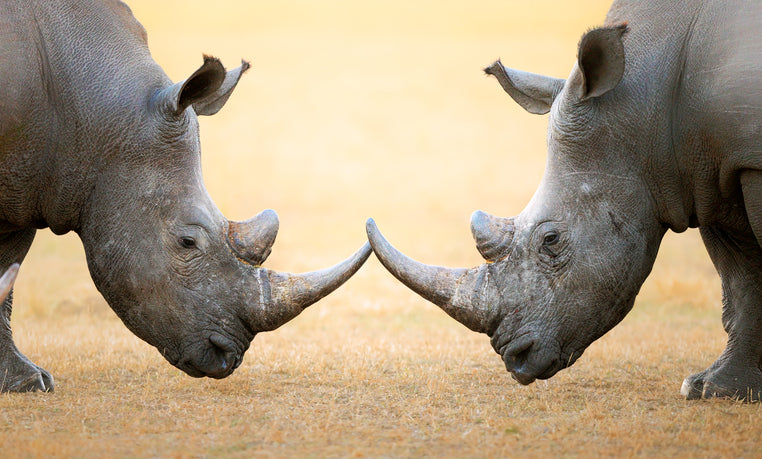
Rhino
Share
The Majestic Rhinos of Kruger National Park 🦏
Kruger National Park is home to both the Black Rhino and the White Rhino, each magnificent in its own right and crucial to the biodiversity of the region. Despite their names, both species are actually shades of grey but differ in physical appearance and behavior.
Distinguishing the Species: The White Rhino, with its wide, square lip, is a grazer that prefers open grassy plains where it can consume large quantities of grass. In contrast, the Black Rhino, which has a pointed, prehensile upper lip, is more of a browser feeding on leaves, shoots, and branches in denser woodland areas. 🌿🍂
Conservation Status: Both species face severe threats from poaching, driven by the demand for their horns on the international black market. Conservation efforts in Kruger are intense and vital, involving rigorous anti-poaching patrols and ongoing research into rhino behavior and ecology. 🛡️🌍
Habitat and Social Behavior: White Rhinos are often seen in small, sociable groups and are known for their more docile nature, making them easier to spot on safaris. Black Rhinos tend to be more solitary and elusive, with a reputation for being slightly more aggressive, often preferring solitude except during mating or mother-calf interactions. 🦏💤
Fun Fact for Kids: Did you know that a group of rhinos is called a ‘crash’? This name might seem odd, but it perfectly describes the thunderous power of these incredible creatures when they move together! 🚀🦏
Engage and Learn: As you colour in the Rhino on your Kruger Park roll, think about the differences between the Black and White Rhinos. Each stroke helps bring to life these ancient giants, whose presence is so vital to the ecological and cultural heritage of Kruger National Park. 🖍️📘